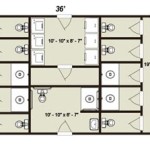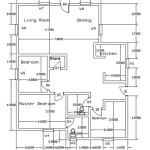Large Victorian House Plans: A Comprehensive Overview
Victorian architecture, a style that flourished during the reign of Queen Victoria (1837-1901), continues to captivate with its intricate detailing, generous proportions, and romantic aesthetic. Large Victorian house plans represent the pinnacle of this architectural movement, offering expansive living spaces and a unique blend of functionality and ornamentation. These plans are not simply blueprints; they are a testament to a bygone era of opulence and craftsmanship.
Understanding the nuances of large Victorian house plans requires an appreciation for the historical context, common architectural features, and modern adaptations that make these homes desirable even today. This article delves into the key aspects of designing and appreciating a large Victorian home, exploring its historical roots, defining characteristics, and considerations for contemporary living.
Historical Influences and Design Evolution
The Victorian era was a period of rapid industrialization and societal change, which profoundly influenced architectural trends. The availability of new materials, such as mass-produced wood trim and plate glass, coupled with advances in transportation, allowed for the construction of more elaborate and spacious homes. The Victorian style is not monolithic; rather, it encompasses a range of sub-styles, each reflecting different influences and geographical locations.
The architectural styles prevalent during the Victorian era can be categorized into several distinct subtypes. Italianate architecture, popular in the early Victorian period, is characterized by low-pitched roofs, wide eaves supported by decorative brackets, and tall, narrow windows. Gothic Revival, another prominent style, features pointed arches, steeply pitched roofs, and elaborate tracery, often drawing inspiration from medieval cathedrals. Queen Anne architecture, perhaps the most recognizable Victorian style, is known for its asymmetrical facades, towers, turrets, and elaborate detailing, including spindlework and patterned shingles. Other styles such as Second Empire, with its signature Mansard roof, and Stick Style, emphasizing exposed wooden framework, also contributed to the diverse landscape of Victorian architecture.
Large Victorian house plans often incorporate elements from multiple architectural styles, creating a unique and eclectic aesthetic. The size and complexity of these homes allowed for a greater degree of ornamentation and customization, reflecting the wealth and status of their owners. The interior layouts of these homes were designed to accommodate large families, servants, and frequent social gatherings, with separate spaces for formal entertaining, private living, and domestic tasks.
Key Architectural Features and Their Significance
Large Victorian houses are characterized by a distinctive set of architectural features that contribute to their overall grandeur and charm. These features are not merely decorative; they are integral to the structural integrity and functional design of the homes. Recognizing these features is crucial to understanding and appreciating the intricacies of Victorian architecture.
One of the most defining features of Victorian homes is their asymmetrical facade. This design element breaks away from the symmetrical balance of earlier architectural styles, creating a more visually dynamic and interesting exterior. Towers and turrets, often incorporated into the design, add verticality and visual interest to the homes, while also providing panoramic views of the surrounding landscape. Porches and verandas, often adorned with intricate woodwork and spindlework, offer shaded outdoor spaces for relaxation and social interaction.
Windows are another crucial element of Victorian architecture. Large, multi-paned windows allow for ample natural light to enter the homes, while decorative stained glass windows add color and visual interest. Bay windows, projecting outward from the facade, create additional interior space and provide enhanced views. The use of different window shapes and sizes further contributes to the overall visual complexity of the homes.
The interior of large Victorian houses is characterized by a grand foyer, high ceilings, and elaborate detailing. Fireplaces are often a focal point of the rooms, adorned with ornate mantels and decorative tiles. Crown molding, wainscoting, and other decorative trim add elegance and sophistication to the interiors. The use of rich materials, such as hardwood floors, marble countertops, and brass fixtures, further enhances the luxurious feel of these homes.
The floor plans of large Victorian houses typically include a formal living room, a dining room, a library, and multiple bedrooms. The kitchen, often located at the rear of the house, was historically a space for domestic tasks and food preparation. Servant quarters, including bedrooms and bathrooms, were often located on the upper floors or in a separate wing of the house. The layout of these homes was designed to accommodate the needs of a large household and to facilitate formal entertaining.
Adapting Victorian House Plans for Modern Living
While large Victorian houses offer a unique architectural charm, adapting them for modern living requires careful consideration and planning. The original floor plans and features of these homes may not be suitable for contemporary lifestyles, necessitating renovations and modifications. Balancing the preservation of historical elements with the incorporation of modern amenities is essential to creating a comfortable and functional living space.
One of the most common challenges in adapting Victorian house plans for modern living is the layout of the kitchen and bathrooms. The original kitchens were often small and utilitarian, lacking the modern appliances and storage space required for contemporary cooking. Bathrooms were often limited in number and size, lacking the amenities such as separate showers and bathtubs that are common in modern homes. Renovating these spaces to meet modern standards requires careful planning and attention to detail.
Another consideration is the heating and cooling systems. Victorian houses were typically heated by fireplaces and lacked central air conditioning. Installing modern HVAC systems requires careful integration with the existing architecture to minimize disruption to the historical fabric of the homes. Energy efficiency is also a key concern, as Victorian houses often have poor insulation and drafty windows. Upgrading the insulation and replacing windows with energy-efficient models can significantly reduce energy consumption and improve comfort.
Preserving the historical character of the home is crucial when undertaking renovations and modifications. Original architectural features, such as fireplaces, windows, and decorative trim, should be preserved and restored whenever possible. New additions should be designed to complement the existing architecture and to maintain the overall aesthetic integrity of the home. Consulting with architectural historians and preservationists can help ensure that renovations are carried out in a sensitive and appropriate manner.
The integration of modern technology is another important consideration. Wiring for modern electronics, such as computers, televisions, and home entertainment systems, needs to be carefully planned and executed to avoid unsightly cables and wires. Installing smart home technology, such as automated lighting and security systems, can enhance the convenience and security of the home without compromising its historical character.
Finally, accessibility is an important consideration for modern living. Victorian houses often have steep staircases and narrow doorways, which can pose challenges for people with mobility issues. Incorporating accessibility features, such as ramps and elevators, can make the homes more accessible to people of all ages and abilities. However, these features need to be carefully integrated into the design to minimize disruption to the historical fabric of the home.
In conclusion, large Victorian house plans represent a significant chapter in architectural history, offering a unique blend of grandeur, ornamentation, and functionality. While adapting these homes for modern living presents challenges, the rewards are substantial, offering a unique opportunity to live in a piece of history while enjoying the comforts of contemporary living.

Victorian House Plans Home Design Gml D 756 19255 Layout Mansion

Untitled Victorian House Plans Mansion Floor Plan Homes

Victorian House Plans Mansion Floor Plan Homes

House Plans Victorian Vintage Sims

Astoria 3230 4 Bedrooms And 5 Baths The House Designers

2 Story Victorian Style House Plan Henrietta Plans Vintage

Montrose 3363 5 Bedrooms And 4 Baths The House Designers

Nice Layout Victorian House Plan With 3965 Square Feet And 4 Bedrooms S From Dream Home So Plans Basement Blueprints

Plan 057h 0009 The House

House Plan 5 Bedrooms 3 Bathrooms Garage 2898a Drummond Plans
Related Posts








